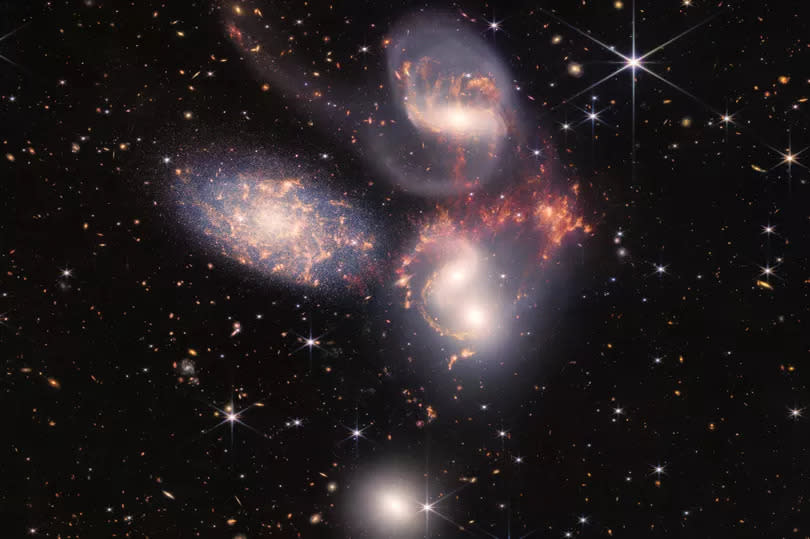An international team of astronomers has discovered 44 previously unknown stars in a galaxy nearly 6.5 billion light-years from Earth.
Using NASA‘s James Webb Space Telescope (JWST), the team used a technique called gravitational lensing to observe the galaxy, which has been dubbed the ‘Dragon Arc’.
The Dragon Arc is located behind a massive cluster of galaxies called Abell 370 and is so distant that astronomers once believed it would be impossible to identify stars in it.
READ MORE: Man travels to Spain – what he finds hidden behind shop leaves him gobsmacked
READ MORE: Win the ultimate VIP weekend away! A three-night Butlin’s Big Weekender, exclusively for adults
ADVERTISEMENT
The discovery, published in the journal Nature Astronomy, marks a record-breaking achievement as the largest number of stars detected in the distant galaxy.
“This groundbreaking discovery demonstrates, for the first time, that studying large numbers of individual stars in a distant galaxy is possible,” said Dr. Fengwu Sun, a postdoctoral researcher at the Harvard & Smithsonian’s Center for Astrophysics who led the team.
“While previous studies with the NASA/ESA Hubble Space Telescope found around seven stars, we now have the capability to resolve stars that were previously outside of our capability.”
“Importantly, observing more individual stars will also help us better understand dark matter in the lensing plane of these galaxies and stars, which we couldn’t do with only the handful of individual stars observed previously.”
Light from the Dragon Arc would have begun travelling through space around 6.5 billion years ago.

“I never dreamed of Webb seeing them in such large numbers,” said Rogier Windhorst, an astronomer at the Arizona State University who was part of the research team.
ADVERTISEMENT
“And now here we are observing these stars popping in and out of the images taken only a year apart, like fireflies in the night. Webb continues to amaze us all.”
By analysing the colour of the newly identified stars, researchers have speculated that the stars are red supergiants in the final stages of its life, similar to Betelgeuse in the constellation of Orion.
Gravitational lensing is a natural magnification effect caused by the strong gravitational fields of massive objects. Albert Einstein predicted gravitational lenses could amplify the light of distant stars by factors of hundreds or even thousands to detect them, according to Harvard & Smithsonian’s Center for Astrophysics.
The James Webb telescope is a collaborative project between NASA, ESA (European Space Agency), and CSA (Canadian Space Agency). It was launched on 25 December, 2021 from the Guiana Space Centre in French Guiana.
The JWST was sent to its operational location at the second Lagrange point (L2), approximately 1 million miles from Earth, and became operational for scientific observations in July 2022.
EMEA Tribune is not involved in this news article, it is taken from our partners and or from the News Agencies. Copyright and Credit go to the News Agencies, email news@emeatribune.com Follow our WhatsApp verified Channel




